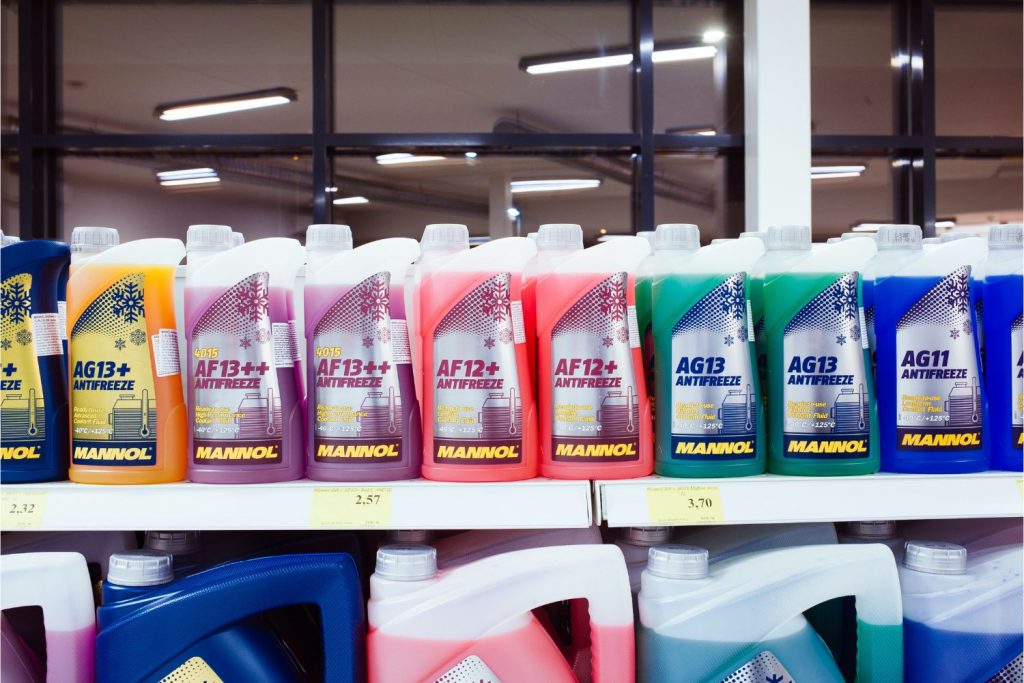We may get commissions for purchases made through links in this post. Thanks for the support! 👍
Coolant is one of those things that everyone knows a vehicle needs, but don’t really understand why it needs it. It doesn’t burn it like fuel, it doesn’t use it for lubrication like oil, instead it is meant for keeping your engine cool.
A car requires coolant because the engine can become rather hot as a result of it working hard to provide power to the vehicle. If an engine does not have access to coolant that serves as a form of protection against overheating, the engine can break down. In some extreme cases of the engine overheating, the engine can also experience melting.

Detailed explanation why a car requires coolant
Engines of vehicles burn fuel for the sake of being able to form energy. That energy makes the car function, as the energy is applied to make it possible for the vehicle to move forward.
But during this process, there is the production of a vast amount of heat. Some of the heat can escape via the exhaust system of the vehicle. But the remainder of the heat is retained by the engine. Thus, coolant is required to make sure that the engine does not experience overheating.
Coolant for vehicles also helps to provide lubrication for various moving parts. This results in offering added projection for the piston timing, the cylinder, the head gasket as well as the water pump.
Coolant works to ensure that heat is transferred away from the engine and also prevents the engine from freezing. This ensures that the car will be able to operate properly.
2,000 degrees Fahrenheit is the average temperature of combustion. But there are cases where the temperature can increase to as much as 4,500 degrees Fahrenheit during the process of combustion. 1,225 degrees Fahrenheit is the temperature at which components that are made of aluminum melt.
A large number of problems that are experienced by engines of vehicles are directly linked to issues with engine cooling. To ensure that the engine of the vehicle is well protected and to make sure that it can operate at a decent temperature, there is indeed the need to use coolant for the engine of the vehicle.
How coolant works
Coolant is placed in a type of reservoir, which is attached to the region of the radiator before it is transported to be used by the engine and the various components of the engine. Coolant is combined with the usage of a cooling system for liquid. Many different parts make up the cooling system for liquid.
There Is the water pump, which is responsible for the circulation of the coolant along the path of the system. The radiator serves to direct heat apart from the coolant. The hoses of the radiator provide connections for the diverse parts of the cooling system. The fan draws air into the radiator in such cases that the vehicle is not going at a rapid enough pace to cause air to flow. In addition, the thermostat is vital for regulating the coolant’s temperature.
As the engine is in the process of running, there is the continuous flow of the coolant within the engine and back to the region of the radiator. Coolant is present in the lower portion of the radiator once it has been cooled.
Then it is taken to the water pump, which transfers the coolant to the block as well as the head of the engine. There the excess heat is absorbed by the coolant to regulate the temperature of the engine. Then the coolant travels to the top portion of the radiator to cool down all over again.
- When to Tune-Up Your Car: Tips for Regular Maintenance
- Top 13 Best Pickup Truck Related Gifts
- Top 5 Signs Your Catalytic Converter is Clogged
Frequency of changing the coolant

The necessary frequency of changing the coolant of a vehicle will be dependent on the recommendations of the manufacturer. That is the reason why each owner of a vehicle should always refer to the manual of the vehicle from the manufacturer.
Then the owner of the vehicle should follow the recommendations carefully by changing the coolant accordingly.
Based on the type of vehicle that someone has, it may be necessary to use a coolant that is formulated for cars with high mileage, a coolant that is designed for particular manufacturers, or a coolant that is formulated with certain additives.
Normally, it is advised to change the coolant at each interval of fifty thousand miles. At this time, the cooling system should also be flushed. But newer models of vehicles nowadays may need to have the coolant changed at each interval of ten thousand miles.
Frequently Asked Questions
What happens if you drive a car without coolant?
If you drive a car without coolant, the engine can overheat and seize. It can also cause serious damage to the engine. This is because coolant helps to cool and without it, seals will melt, metal will warp and the engine is unable to run and can even no longer turn over.
Is coolant the same as antifreeze?
Essentially, coolant and antifreeze are the same things. Antifreeze is a coolant that is used to help lower the freezing point of water so that it can protect an engine in cold weather. While not all coolant is antifreeze, all antifreeze is coolant.
Can I use just water as coolant?
No, you should not use just water as a coolant. Water can cause corrosion and rust in the engine. It can also lead to overheating and seizing. Coolant is specifically designed to protect engines and using just water puts your engine at risk. However, if you are in a pinch, you can use water, but you will want to make sure to replace it with coolant as soon as you are able.
Conclusion
It truly is imperative for a vehicle to have enough coolant at all times to ensure that the engine will not overheat. Coolant allows the engine to be able to function optimally. It is vital to change the fluid regularly according to the manufacturer’s recommendations.
![This Is How Cars Have Wifi [And Why]](https://amanandhisgear.com/wp-content/uploads/2020/01/How-do-cars-have-wifi.jpg)


